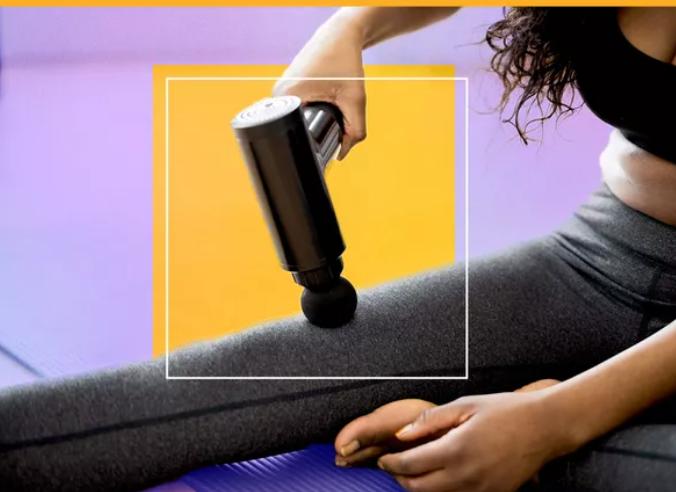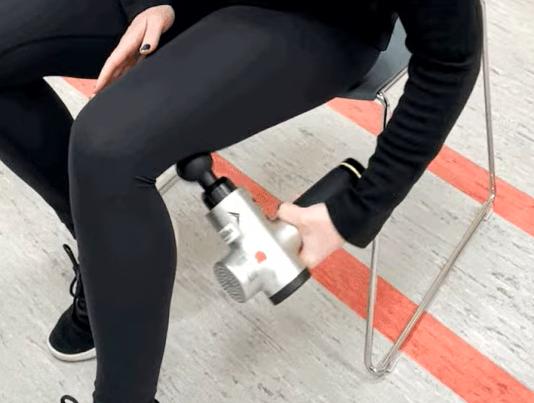A percussion massager can be a game-changer for muscle recovery and relaxation. This innovative tool delivers rapid bursts of pressure into muscle tissue, enhancing blood flow and reducing muscle tension. It’s crucial to understand how to use percussion massager properly to maximize benefits and avoid injury. Our comprehensive guide will lead you through the correct usage, ensuring you get the most out of your device for effective muscle recovery.

What Is a Percussion Massager and How Does It Work?
Percussion massagers, also known as massage guns, use rapid oscillations to penetrate deep into the muscle layers. These devices are designed to provide percussive therapy, which boosts blood circulation, reduces muscle stiffness, and alleviates minor aches and pains. They are commonly used by athletes for quick recovery, but anyone experiencing muscle tension can benefit. By delivering quick and concentrated pulses, percussion massagers help break up muscle knots and promote healing.
How to Use a Percussion Massager: A Beginner’s Guide
Using a percussion massager correctly involves understanding its features and applying proper techniques. Here’s a step-by-step guide to get you started:
Selecting the Right Attachment Head
Percussion massagers come with various attachment heads designed for different muscle groups. A flat head is ideal for larger muscles like the back and thighs, while a bullet head targets deep tissue areas. Choose the attachment that best suits your needs.
Adjusting Speed and Intensity Settings
Most percussion massagers have multiple speed and intensity settings. Start with a lower setting to allow your muscles to adapt, gradually increasing the intensity based on your comfort level. Always follow the manufacturer’s recommendations.
Proper Technique for Different Body Areas
When using the massager, move it slowly across the muscle, letting it pulse for 30-60 seconds on each spot. Avoid bony areas and joints. For larger muscles, such as in the legs or back, use sweeping motions. For smaller areas, like the shoulders, use precise, shorter movements.
Duration and Frequency of Use
Use the massager for about 10-15 minutes per session. Limiting sessions to 2-3 times per day can prevent overstimulation and ensure optimal recovery. Always listen to your body and adjust usage accordingly.
Targeting Specific Muscle Groups with Your Percussion Massager
Massaging the Back and Shoulders
For back and shoulders, use broad attachment heads. Glide the massager along the spine, avoiding direct pressure on bones. Focus on knots and tight areas for about 60 seconds each.
Treating Leg Muscles
When treating leg muscles, such as the quadriceps and hamstrings, use a larger head and perform sweeping motions. This approach can help with post-exercise soreness and improve flexibility.
Addressing Arm and Chest Muscles
Use smaller heads for arms and chest muscles to ensure precision. Move the massager gently across each muscle group, ensuring complete muscle coverage without lingering too long in one area.
Pre-Workout vs. Post-Workout: When to Use Your Percussion Massager
Using a percussion massager pre-workout can warm up muscles and enhance flexibility, reducing the risk of injury. A 5-minute session focused on major muscle groups is typically sufficient. Post-workout, it aids recovery by minimizing muscle stiffness and promoting blood circulation. A 10-minute session after exercise can significantly reduce DOMS (delayed onset muscle soreness).

Safety Precautions and Contraindications
While percussion massagers are generally safe, certain precautions are necessary. Avoid using the device on swollen body parts, broken skin, or over recent surgical sites. Individuals with muscle tears or severe bruises should consult a healthcare professional before use. Pregnant women and individuals with cardiovascular conditions should also seek medical advice before using a percussion massager.
Maintaining and Cleaning Your Percussion Massager
To ensure longevity and hygiene, clean your percussion massager regularly. Detach the attachment heads and wipe them with a damp cloth and mild soap. Avoid using water directly on the device. Store it in a dry, cool place to prevent damage.
Conclusion
Mastering how to use percussion massager can significantly enhance your muscle recovery routine. By understanding how to use it properly and following the recommendations for each muscle group, you’ll experience reduced muscle tension and improved flexibility. Remember to incorporate safety precautions and maintain your device for the best results.
FAQ
What is percussion therapy?
Percussion therapy involves using quick, rapid bursts of pressure to stimulate muscle tissue. This method helps to increase blood flow, reduce muscle tension, and enhances recovery.
What are the key benefits of using a percussion massager?
Key benefits include improved blood circulation, reduced muscle soreness, faster recovery times, and enhanced flexibility. It’s also useful for alleviating muscle stiffness and discomfort.
What should I look for when choosing a percussion massager?
Look for a device with multiple speed settings, various attachment heads, and a comfortable grip. Battery life and noise level are also important considerations. Ensure it meets your specific needs and preferences.
